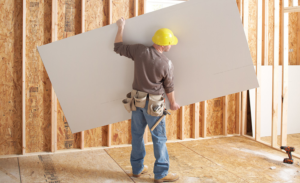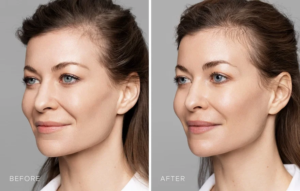Drywall Repair Las Vegas is a fairly easy do-it-yourself project. However, it does take time and practice to get the job right.
Small holes, dings, and minor cracks can be easily fixed using spackle, a putty knife, sandpaper, and joint compound. This is one of the most satisfying home improvement projects!

No matter how careful you are in your home, it’s inevitable that you will encounter some holes and dents in the walls. The good news is that you can fix almost any hole with a few quick and easy steps. This is especially true of tiny screw and nail holes, which are the most common types of drywall damage. You can use a wide putty knife to fill these with spackling compound or wall joint compound, and then sand the area smooth before painting it.
First, make sure that the hole is completely dry by touching it with your finger. If it still feels rough, you need to sand the surface again. Once the area is smooth, wipe away any sanding dust with a damp paper towel.
If you are concerned about the color of your repaired drywall, you can bring paint chips from your wall to a hardware store for a closer match. Otherwise, you can simply use a paint that is slightly lighter than your existing wall color.
Before you begin patching, turn off the electricity to the affected area if it’s not already turned off. This will prevent any electrical or plumbing issues from popping up while you’re working on the project. Also, be sure to check that all wiring and pipes are securely anchored to the wall before you cut into it.
A drywall patch kit is an easy way to fix small holes and dents. This kit typically includes a drywall patch, tape, sanding tool, and matching paint. Using the patch will save you from having to cut out and replace a larger section of drywall.
If the drywall patch is not a perfect fit in the hole, you will need to add some bridging material. This is easy to do with a utility knife and can be done while you’re working on the rest of the patch.
For dents and holes that are near the edge of your wall, you can use self-adhering mesh tape to cover the edges of the hole. You can then apply spackling or wall joint compound over the mesh tape and sand smooth before painting.
Small holes, dents and dings can be easily repaired by using a patch kit for drywall. However, when the hole is larger than a dollar coin, repairing it becomes more of a project. However, even novice DIYers can tackle large drywall repairs with some care and patience.
Before tackling any drywall repair, make sure to clean the area by removing loose drywall and clearing away any chipped paint. Then sand the surface to smooth it. This is especially important if the hole was caused by a fastener or power screw.
The next step is to square off the hole if needed. This can be done with a utility knife or small saw blade. If you are using a saw, it is recommended that you use a straight edge to guide the saw and ensure that all cuts are even. Also, remember to be careful not to cut any electrical wires in the wall.
Once the area is cleaned, it’s time to prepare for the drywall patch. A drywall patch can be purchased at any hardware store and is typically easy to install:
- Tape all the seams around the opening.
- Using a drywall knife, spread a layer of joint compound over the tape. Let it dry overnight.
- Sand the dried compound until it is smooth and blends in with the rest of the wall.
When dealing with larger holes, you’ll need to brace the wall. This can be done by inserting a piece of wood into the hole on the left and right side, or by placing a stud in the top and bottom of the wall in the center of the hole. This will help support the drywall patch and keep it from becoming damaged in the future.
Once the patch and seams are finished, it’s time to sand and apply a coat of primer to match the rest of the wall. Then, once the primer is dry, you can finish it with your choice of color. If the wall is already textured, you can skip this step.
Cracks in drywall are usually an indication of something that needs to be repaired. The type of crack you have will tell you a lot about what is happening and whether you can fix it yourself or it’s time to call in the professionals.
Fine, straight cracks are often the result of normal house settling that can be easily remedied by re-taping the joints or seams in your walls. It is important to check on these cracks after the repair and keep an eye out for them reoccurring, as this is an early warning sign that there may be structural problems in your home that need immediate attention.
Wall and ceiling cracks may also be the result of a lack of proper support in your foundation or structural elements. It is important to consult with a professional to ensure that your foundation is stable and that any cracking you have in your drywall is not due to structural problems.
Another common cause of drywall cracks is changes in humidity. Drywall is very sensitive to changes in humidity, which can lead to expanding and contracting that causes cracks in the drywall. Keeping humidity levels consistent can prevent this problem from occurring.
In addition to humidity, cracks can also be caused by a change in temperature or by a shift in the weight on a building’s structural components. For example, if a family member moves in or out of a home, it can cause the house to settle differently and can cause cracking in drywall.
If you have a crack in your wall or ceiling that is due to a change in humidity, you can patch it by adding some self-adhering mesh tape to the area where the crack is. This will help to strengthen the crack, reduce shifting and make it less noticeable. Next, cover the tape with a layer of joint compound and smooth it out with a putty knife. After the compound is dry, you can feather the edges to make the repairs blend in with the rest of the wall or ceiling.
When you’re making repairs to textured walls and ceilings, it’s important that you match the texture so that the patch isn’t standing out. This is especially true for knockdown texture, which is more likely to show up as an uneven surface than other types of texture.
If you know the type of texture that was used when your wall or ceiling was originally applied, then matching it will be easier. If you’re not sure, it may take some time to experiment with different tools and techniques on scrap pieces of wallboard until you find a match.
There are four main types of drywall textures: orange peel, skip trowel, knockdown, and sand. Each has a unique look and requires slightly different application methods. If you have a lot of experience, then you may be able to recognize the type of texture just by looking at it. However, it’s best to apply a small patch and examine it carefully before committing to a full repair.
Regardless of the type of texture you want to use, you should always water down your mud mixture. This will help it flow smoothly across the surface, whether you’re using a hand tool or a sprayer. The amount of water that you add will depend on the effect that you’re trying to achieve, so be sure to experiment on a few test areas before applying it to your repair.
Once your mud is at the right consistency, apply it to your repaired area. Make sure to apply it evenly, feathering out the edges for a seamless transition. Once the mud is dry, you can sand it lightly to remove any high spots.
After you’ve sanded your repaired area, you can apply a coat of joint compound to the surface. When the compound is dry, you can retexture it if needed. Be sure to prime the patch and a few inches beyond it to prevent moisture damage and discoloration. Then, you can reapply your desired drywall texture and enjoy your newly repaired and retextured walls. When you’re ready for a fresh coat of paint, all that’s left to do is to sand the surface again until it’s smooth and prepared for painting.
